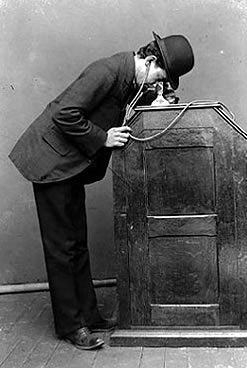Our research on Thomas Edison led us into the fascinating world of early animation and some of the tools early animators used to create the illusion of movement and hence, "motion pictures." One of these early tools that Edison himself was inspired by was the thaumatrope. In a previous post, you can see that we made our own thaumatropes.


A more advanced early animation and motion picture tool was the kinetescope. It passed a series of still pictures through a view finder and gave the illusion of a movie to those who watched. We learned that the more still pictures (frames) you pass per second, the more smooth and realistic the movie is.

We applied this same concept but with help from a little modern technology. The LEGO Movie app allows you to create stop motion animation in much the same way these early machines did. It was tough to learn from all of our mistakes in just one hour, but I was very impressed with what the students created in such a limited time! Their videos are below:


































